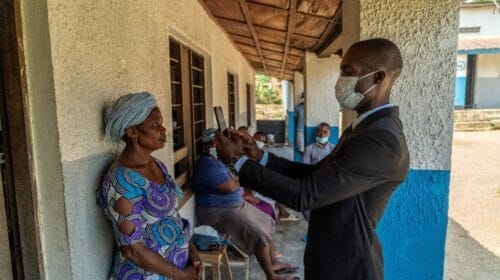WHO-commissioned global systematic review finds high HCV prevalence and incidence among men who have sex with men

In collaboration with the Kirby Institute at UNSW Sydney, Australia, WHO has published today a systematic review and meta-analysis of the prevalence and incidence of hepatitis C virus (HCV) infection in men who have sex with men (MSM) in The Lancet Gastroenterology & Hepatology.
Globally an estimated 71 million people have chronic HCV infection and each year, there are an estimated 1.75 million new infections.
WHO has set targets to eliminate hepatitis C virus by 2030. This ambitious goal is within reach as curative direct-acting antivirals (DAA) for HCV are now available in addition to effective prevention measures. While HCV transmission occurs primarily through injecting drug use and unsafe injecting in healthcare settings, sexual transmission may also occur, particularly through unprotected anal intercourse.
WHO commissioned this systematic review and meta-analysis to summarise the global evidence on the prevalence and incidence of HCV infection among MSM and to examine associations with HIV and injecting drug use. The results are presented in this paper.
Of 1221 publications identified, 194 were assessed to be eligible and included in the meta-analysis.
“Findings from this review show that MSM populations globally have a high burden of HCV infection, with substantial variations across countries and regions,” states the lead author, Jeff Jin, from the UNSW Sydney. In this review, the overall pooled HCV prevalence in MSM was 3.4% (95% CI: 2.8-4.0).
The publication confirms the increased HCV risk in HIV-positive MSM. The review found that globally, pooled HCV prevalence in HIV-positive MSM was 6.3% (95% CI: 5.3-7.5) compared with 1.5% (95% CI: 1.0-2.1) in HIV-negative MSM. The difference in pooled HCV prevalence between HIV-positive and HIV-negative MSM was highest in the WHO European Region, followed by the WHO Western Pacific and the Americas regions. This elevated HCV prevalence among HIV-positive MSM accounts for much of the additional HCV burden observed among MSM relative to the general population.
Injecting drug use is a major contributor to HCV transmission globally and is also an important risk factor for HCV transmission among MSM populations. MSM with a history of injecting drug use are significantly more likley to be HCV-positive than MSM who have not injected drugs. The pooled HCV prevalence was substantially higher in MSM who had ever (30.2%, 95% CI: 22.0-39.0) or currently (45.6%, 95% CI: 21.6 – 70.7) injected drugs when compared to those who had never injected (2.7%, 95% CI: 2.0-3.6).
“Reaching and supporting MSM who also inject drugs with adapted and effective prevention, testing and treatment services is critical,” says Dr Niklas Luhmann, a Technical Officer in the WHO Global HIV, Hepatitis and Sexually Transmitted Infections Programmes.
Global data on HCV incidence among MSM was also reviewed. A total of 46 studies that reported on HCV incidence in MSM were included. The analysis found that rates of new infections are highest among HIV-positive MSM with a pooled HCV incidence of 8.46 (95%CI: 6.78-10.32) per 1,000 person-years and in a few recent studies of HIV-negative MSM who take pre-exposure prophylaxis (PrEP) (pooled HCV incidence of 14.80 (95% CI: 9.65-20.95) per 1,000 person-years).
This higher HCV incidence seen among MSM taking PrEP may be due to several factors: MSM who chose PrEP typically do so because they have self-identified higher HIV risk and barriers to consistent condom use. They may also have greater sexual mixing with HIV-positive MSM who, as noted above, have a higher HCV prevalence than HIV-negative MSM. Furthermore, in the studies reviewed, higher risk HIV-negative MSM who choose PrEP were found to have a high prevalence of HCV viremia before PrEP initiation. This higher risk for HCV seen in HIV-negative men taking PrEP may therefore pre-date PrEP use rather than relate to changes in sexual behaviour and condom use after PrEP initiation.
“We know that we need to improve access to prevention, testing and treatment for highly affected and sometimes marginalized populations to reach our goals of hepatitis elimination,” said Dr Meg Doherty, Director of the WHO Global HIV, Hepatitis and Sexually Transmitted Infections Programmes. “This first global systematic review of HCV prevalence and incidence in MSM populations highlights that more efforts are needed to support access to HIV and HCV prevention, testing and treatment for MSM at higher risk. Existing HIV and PrEP programmes for MSM should include HCV testing and treatment and offer adapted prevention interventions“.




